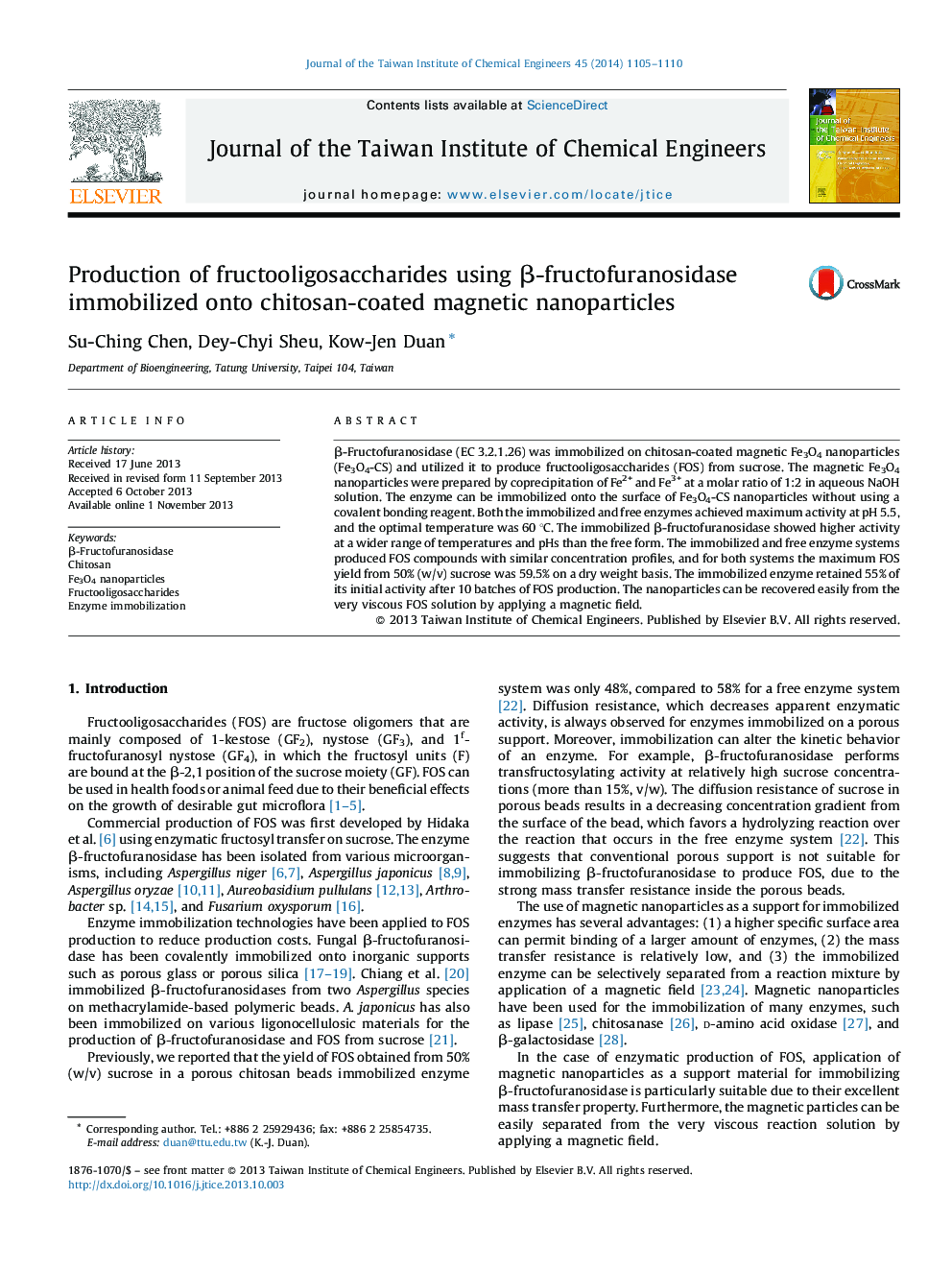| Article ID | Journal | Published Year | Pages | File Type |
|---|---|---|---|---|
| 690860 | Journal of the Taiwan Institute of Chemical Engineers | 2014 | 6 Pages |
•β-Fructofuranosidase was immobilized on the chitosan-coated magnetic Fe3O4 nanoparticles without using a covalent bonding reagent.•The immobilized β-fructofuranosidase showed higher activity at a wider range of temperatures and pHs than the free form.•Both the immobilized and free enzymes achieved a maximum FOS yield of 59.5% in dry weight basis from 50% (w/v) sucrose solution.•The immobilized enzyme retained 55% of its initial activity after 10 batches of the FOS production.
β-Fructofuranosidase (EC 3.2.1.26) was immobilized on chitosan-coated magnetic Fe3O4 nanoparticles (Fe3O4-CS) and utilized it to produce fructooligosaccharides (FOS) from sucrose. The magnetic Fe3O4 nanoparticles were prepared by coprecipitation of Fe2+ and Fe3+ at a molar ratio of 1:2 in aqueous NaOH solution. The enzyme can be immobilized onto the surface of Fe3O4-CS nanoparticles without using a covalent bonding reagent. Both the immobilized and free enzymes achieved maximum activity at pH 5.5, and the optimal temperature was 60 °C. The immobilized β-fructofuranosidase showed higher activity at a wider range of temperatures and pHs than the free form. The immobilized and free enzyme systems produced FOS compounds with similar concentration profiles, and for both systems the maximum FOS yield from 50% (w/v) sucrose was 59.5% on a dry weight basis. The immobilized enzyme retained 55% of its initial activity after 10 batches of FOS production. The nanoparticles can be recovered easily from the very viscous FOS solution by applying a magnetic field.
